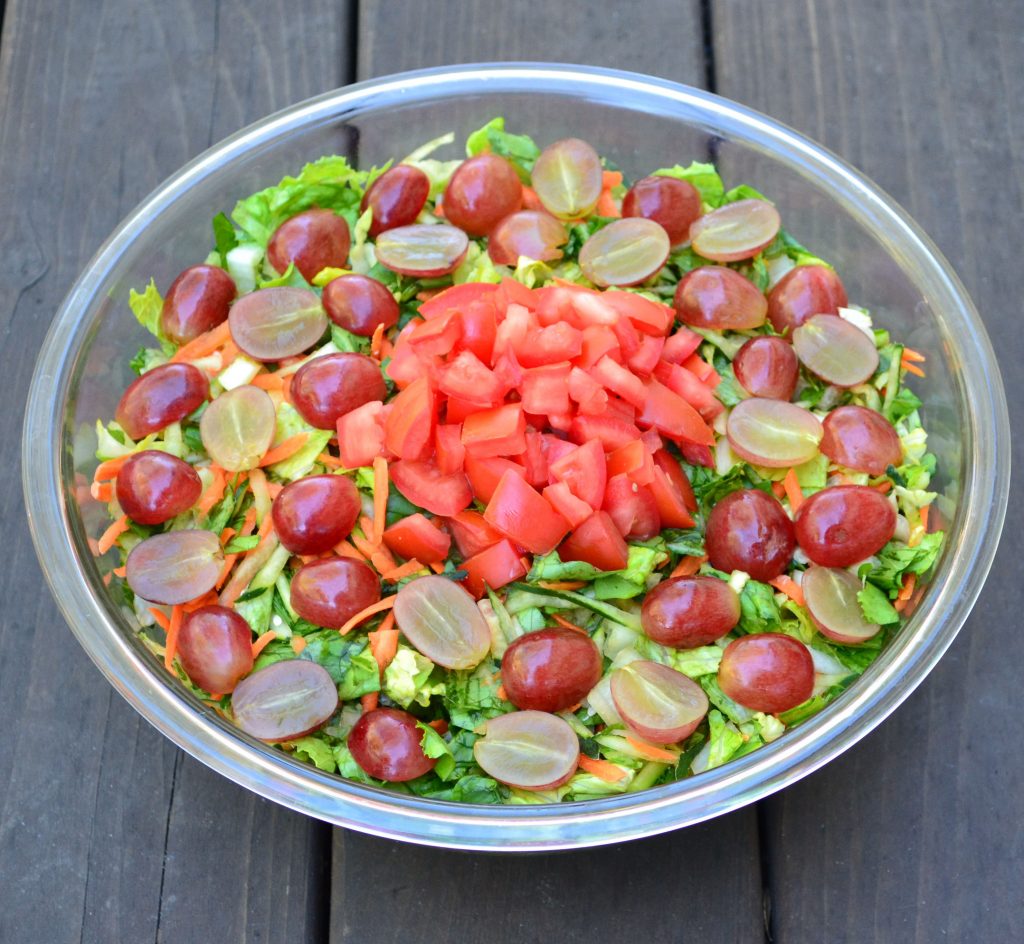Day 21 of My Top 30 for 30:

When I started with raw food 30 years ago, I found myself modeling my raw food portion sizes after my standard western meals. Imagine a standard sized plate with a piece of meat, a scoop of mashed potatoes, and some type of cooked vegetable like peas, corn, or carrots.
My first few raw food salads took up the same amount of room on my plate, but I learned very quickly that this amount of salad still left me for hungry and wanting to eat more.
Why? The answer is simple: high water content fruits and vegetables do not contain as many calories per pound as more dense cooked foods. What it came down to, was that I needed to eat more food to feel satisfied, so my fruit and vegetable meals grew in size and I felt satisfied.
People would comment about the amount of food I was eating, but I was happy the results I was getting. I even lost a little bit of weight without even trying.
This is the principle of calorie density in action. Calorie density is the number of calories per weight of a particular food, such as calories per pound. The greatest determinants of calorie density are water, fat, and fiber content, and of these, water is most important.
The more water a food contains, the lower the calorie density of that food. The higher the fiber content of a food, the lower the calorie density. The higher the fat content of a food, the higher the calorie density.
Fresh fruits and vegetables are naturally high in fiber, low in fat, and are water rich in comparison to foods that contain less water, such as nuts and seeds, grains, and meat products.
Raw vegetables are around 100 calories per pound while fruits range from 200 to 300 calories per pound. Cooked legumes and grains range from 400 – 500 calories per pound, meat/meat products range from 500 to 2500 calories per pound, and nuts and seeds range from 2500 to 2750 calories per pound.
As you can see, centering your diet around fruits and vegetables is much lower in calorie density than centering one’s diet around meat, denser cooked foods, or nuts and seeds. This is why when someone shifts over to a raw food diet focused on fruits and vegetables, it is essential to increase portion sizes to feel full and get important nutrients.
And this is why those of us on the path for a long time eat large salads! We’ve been teaching this topic for over 15 years, since we see it as an essential-to-understand foundational topic for raw food and plant-based diet success and is one of the many important topics we cover in our Mastering Raw Food Nutrition course.
To learn more about Mastering Raw Food Nutrition, you can click here: https://rawfoodeducation.com/?page_id=2721
